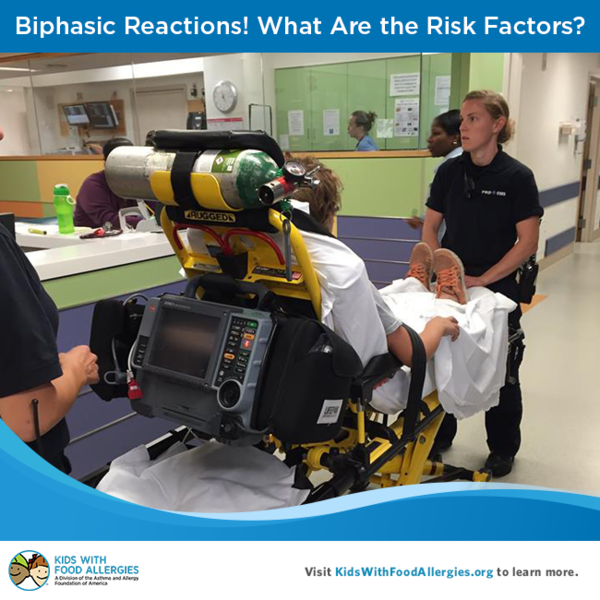Which children are at risk for a second, severe allergic reaction hours after the first? The largest study to date looked at these so-called biphasic anaphylactic reactions. It found 5 predictors to identify risk factors, a recent study reported.
Biphasic reactions are reactions that happen hours after the first allergic reaction. They can be more severe than the first one. It is why people are supposed to be watched in an emergency room for several hours after anaphylaxis.
Canadian researchers examined 484 patient records from two pediatric emergency rooms in Canada.
Besides identifying risk factors, the study also looked at how often anaphylaxis occurred. Out of 484 patients, biphasic reactions happened close to 15% of the time.
Biphasic reactions were more likely if:
- the first allergic reaction was severe,
- or if it was not treated with epinephrine.
In addition, anaphylaxis was more severe if the administration of epinephrine was delayed. “Delayed” was defined as not arriving at the emergency room more than 90 minutes after the reaction first began.
The research identified five predictors of biphasic reactions in children, including:
- A more-than-90 minute-delay in wait to get epinephrine, or in presenting to emergency room staff when the first allergic reaction starts
- Wide pulse pressure at triage
- Receiving more than one dose of epinephrine after the first allergic reaction
- Receiving inhaled albuterol because of breathing difficulties
- Falling between the ages of 6 to 9 years old
The study found that 75% of the biphasic reactions happened within six hours from the start of the first reaction. The rest happened after the patients were released from the emergency room. At least half of the biphasic reactions were severe, and required epinephrine.
The doctors advised that some children might benefit from a longer stay in the ER. They include those who come in with a seemingly mild allergic reaction, but did not receive epinephrine.
Dr. Waleed Alqurashi, the lead author of the study, said the key takeaway is to give epinephrine immediately at the start of an allergic reaction.
“The key message here for patients, parents, caregivers, teachers, and first-responder health professionals is: to prevent an anaphylactic reaction from worsening, administer epinephrine immediately after the onset of the early symptoms of an allergic reaction,” he said in a statement.
Dr. Alqurashi is an emergency medicine physician at CHEO, and assistant professor at the University of Ottawa.
However, children who do not have any of these 5 risk factors who have a mild reaction may be able to leave the hospital faster, he said. But observation periods need to be tailored to each patient.
Alqurashi, W; Stiell, I; Chan, K; Neto, G; Abdulaziz A; Wells, G.
“Epidemiology and clinical predictors of biphasic reactions in children with anaphylaxis.” Published online June 22, 2015 in the Annals of Allergy, Asthma and Immunology.



Comments (0)